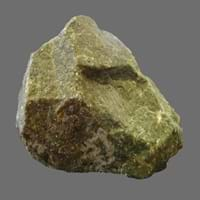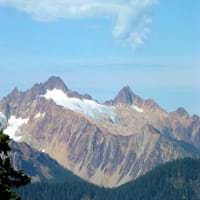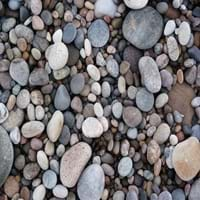Dunite is a green to brownish coarse-grained igneous rock mainly consisting of olivine 0
Ferdinand von Hochstetter 0
From the name of Dun Mountain, New Zealand, + -ite1 0
Durable Rock, Medium Hardness Rock 0
Coarse Grained Rock, Opaque Rock 0
Decorative Aggregates, Interior Decoration 0
As Building Stone, As Facing Stone, Garden Decoration, Paving Stone 0
As Dimension Stone, Cement Manufacture, Construction Aggregate, for Road Aggregate, Making natural cement, Raw material for the manufacture of mortar 0
Artifacts, Monuments, Sculpture, Small Figurines 0
Creating Artwork, Gemstone, Jewelry, Source of Chromite, Platinum, Nickel and Garnet, Source of Diamonds 0
Constitutes upper part of the Earth's mantle, Generally rough to touch, Host rock for Diamond, Is one of the oldest rock 0
Archaeological Significance
0
Dunite is a plutonic ultramafic igneous rock consisting almost m olivine. It can be formed in two ways. 0
Amphibole, Chromite, Garnet, Magnesium, Olivine, Phlogopite, Plagioclase, Pyroxene 0
Ca, CaO, Fe, Potassium, Silicon Dioxide, Sodium, Titanium Dioxide 0
Burial Metamorphism, Cataclastic Metamorphism, Contact Metamorphism 0
Biological Weathering, Chemical Weathering, Mechanical Weathering 0
Coastal Erosion, Glacier Erosion, Water Erosion 0
Heat Resistant, Pressure Resistant, Wear Resistant 0
Deposits in Eastern Continents
0
China, India, Indonesia, Kazakhstan, Russia, South Korea, Thailand, Turkey 0
Finland, France, Georgia, Germany, Great Britain, Italy, Kazakhstan, Netherlands, Norway, Spain, Switzerland, Venezuela 0
Deposits in Western Continents
0
Argentina, Brazil, Colombia, Ecuador, Venezuela 0
Deposits in Oceania Continent
0
New Zealand, Western Australia 0
Learn more about Properties of Dunite
What is Dunite? In this section, we will learn more about properties of Dunite i.e. physical and thermal properties. Physical properties of Dunite include Color, Streak, Hardness, Structure, Cleavage, Fracture, Luster, Specific Gravity etc. The strength of Dunite is 107.55 N/mm2. Streak of Dunite is white while its cleavage is imperfect. Luster of Dunite is shiny and its fracture is irregular. Dunite is translucent to opaque in nature. Know all about Dunite, What is Dunite, its composition, features, facts and reserves in next sections.
Know about Composition of Dunite
What is Dunite composed of? Get to know about composition of Dunite here. Dunite definition gives information about the Formation of Dunite and its composition.The composition of Dunite can be further divided into mineral and compound content. The mineral content of Dunite rock includes Amphibole, Chromite, Garnet, Magnesium, Olivine, Phlogopite, Plagioclase, Pyroxene and The compound content of Dunite rock includes Ca, CaO, Fe, Potassium, Silicon Dioxide, Sodium, Titanium Dioxide. Almost all rocks undergo transformation process. Know all about Dunite rock in next section.









